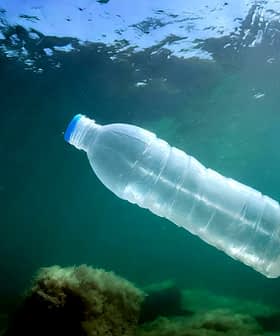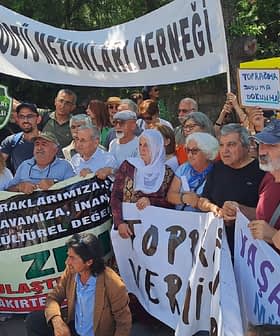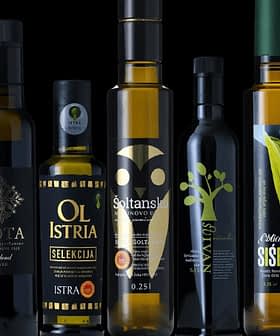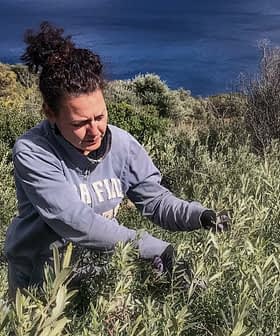 16.6K reads
16.6K readsNews Briefs
Nutri-Score Founder: Olive Oil Will Never Attain the Highest Rating
Olive oil could never receive a “Green A” from Nutri-Score, according to one of its founders, due to its fat content, but the heart-healthy nature of olive oil’s monounsaturated fats will upgrade all categories of olive oil to a “Light-green B” when the FOPL system is updated this year. The request for olive oil to be rated as a “Green A” is not a request of the olive oil sector, but is based on numerous studies and clinical trials showing that extra virgin olive oil is the healthiest among all known fats, according to the Spanish Association of Olive Municipalities.
According to one of its founders, Olive oil could never receive a “Green A” from Nutri-Score, the top rating from the front-of-pack food labeling system (FOPL).
I wonder, is it the economic sector that decides how to classify a product, or is it the scientists?
Serge Hercberg, a French nutritionist at Sorbonne Paris North University, told the Spanish news agency EFE that since the only macronutrient present in olive oil is fat, it would be impossible for it to receive an “A” grade.
However, he added that this does not diminish olive oil’s importance to human health or the Mediterranean diet.
See Also:Public Health Groups Urge E.U. to Expedite Introduction of Front-of-Pack Food LabelsHercberg indicated that the heart-healthy nature of olive oil’s monounsaturated fats was the main reason why all categories of olive oil will be upgraded from the “Yellow C” to the “Light-green B” when the algorithm underpinning the FOPL system is updated this year.

Serge Hercberg
“I read a lot in the Spanish press that the olive oil sector wants the A rating,” he told EFE. “I wonder, is it the economic sector that decides how to classify a product, or is it the scientists? Tomorrow Coca-Cola will say that it wants an A or a B and Nutella from the Ferrero group that it wants a better evaluation.”
What is Nutri-Score?
Nutri-Score is a front-of-pack nutrition labeling system that assigns a score to food products based on their nutritional content, such as energy, total sugar, total fat, saturated fat, fiber, and protein. The score ranges from A (best) to E (worst) and is displayed on the label using a color-coded system. It is meant to help consumers make healthier food choices by quickly and easily comparing the nutritional value of different products. Nutri-Score was developed by scientists in Europe and has been adopted in several countries, including France, Belgium, and Spain.
José Penco, director of the Spanish Association of Olive Municipalities (AEMO), was quick to retort: “it is not acceptable to compare olive oil with Coca-Cola or Nutella nutritionally. Furthermore, we find it impossible to believe that this phrase was pronounced by a scientist.”
In a comment published on LinkedIn, Penco added that the request for olive oil to be rated as a “Green A” should not be considered a request of the olive oil sector.

“It is not the economic sector that decides or proposes how to classify extra virgin olive oil; it is the multitude of studies and clinical trials published that show that extra virgin olive oil is the healthiest among all known fats,” Penco wrote.
Nutri-Score is a traffic-light-style FOPL that uses a combination of five coordinated colors and letters to rate how healthy a packaged food item is based on its fat, sugar, salt and calorie content per 100-gram or milliliter serving. The “Green A” indicates the healthiest option, and “Red E” denotes the least healthy.
According to Euroactiv, Hercberg said Nutri-Score labels could not provide consumers with all possible health and nutritional information about any single food item.
For example, Nutri-Score does not indicate whether foods are ultra-processed, contain pesticides or where the food was grown or produced.
Additionally, Nutri-Score does not recommend serving sizes of the labeled product. Still, Hercberg said that Nutri-Score is currently the most efficient labeling system.
“We are not able to add all these elements in a single label,” he said. “You must accept the idea that segmented and complementary information should be given.”
Penco said these types of statements from Hercberg galvanize the olive oil sector to continue lobbying against the widespread introduction of Nutri-Score.
“We are proud of the work we have done to halt the proposed front-of-pack Nutri-Score labels, even more so when we read such statements,” he said.
Nutri-Score is currently among the FOPL systems being studied by the European Commission ahead of its much-delayed plans to introduce a mandatory pan-European food label, which is not expected before 2024.










